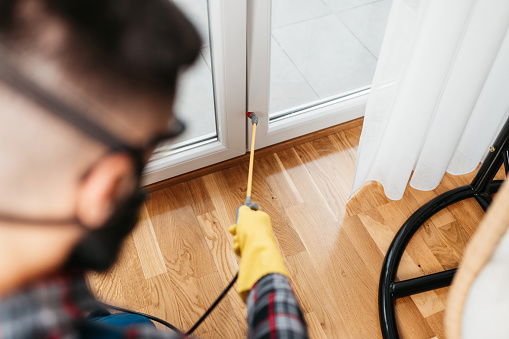The Basics of Getting a Pest Control Service

Pest control is the process of removing unwanted or harmful organisms from homes, businesses and other places. It includes many methods, but the primary ones are suppression, prevention, and eradication. Suppression: The goal is to reduce or eliminate pest numbers to a level that is acceptable for the environment and health. This can involve physical or mechanical methods, such as sticky barriers, heat killing (for storage pests), and flooding (for ground pests). Biological: Using living organisms to remove unwanted organisms is called biological pest control. It is often less costly than traditional chemical methods and is more ecologically sound.
It is also more effective than other methods, and it doesn’t have the long-term effects that chemicals do. However, it takes time to work and is usually not a solution for large pest invasions like insects or plants. Discover more facts about pest control at http://www.ehow.com/how_5627380_choose-pest-control-companies.html. The main advantage of this approach is that it is less toxic to people and the environment than traditional chemical methods. It can also be less expensive in the long term, given the fact that pests tend to become more resistant to chemical treatments as they age.
Prevention: Keeping pests from entering your home and damaging it is the first step in controlling them. This can involve sealing gaps around doors, windows and walls. It can also involve storing foods inside sealed containers and properly disposing of waste. Avoid putting food scraps on your kitchen counter and in bird feeders, and keep your garden trimmed to prevent possums from nesting. This will also help keep rats and mice away from your property. Insects and rodents are the most common pests found in the home, but other types of creatures can also pose a problem. Rats and mice can chew electrical wires and cause fires, while birds are more prone to catching illnesses such as hantavirus pulmonary syndrome, leptospirosis, salmonella and plague.
Termites, spiders and ticks are also pests that can carry dangerous diseases to people in their bites or through contaminated food. These parasites can transmit serious infections such as plague, typhus and cat scratch fever. A good way to avoid pests is to take a walk around your home and check for possible entry points where they can get in. Make sure there are no holes in walls, doors or windows that can be accessed by pests. You should also clean out your gutters and keep your yard well maintained. If you do encounter pests, the best thing to do is to contact a professional for treatment options.
You can do this by either finding a local Pest Control Wake Forest company or looking on the internet for one that offers services in your area. The most common and widespread method for pest control is to use pesticides. These are chemicals that are designed to kill or repel pests and their eggs. This is an effective method when applied properly by a qualified Wake Forest Pest Control professional. The second type of control is Integrated Pest Management (IPM). This involves using strategies that don’t include toxic chemical treatments and are designed to maintain the balance of natural organisms at a site, thereby reducing or eliminating pest populations. This approach has been shown to be a more cost-effective option, since it does not produce as much pesticide residue and surface contamination on the site.
